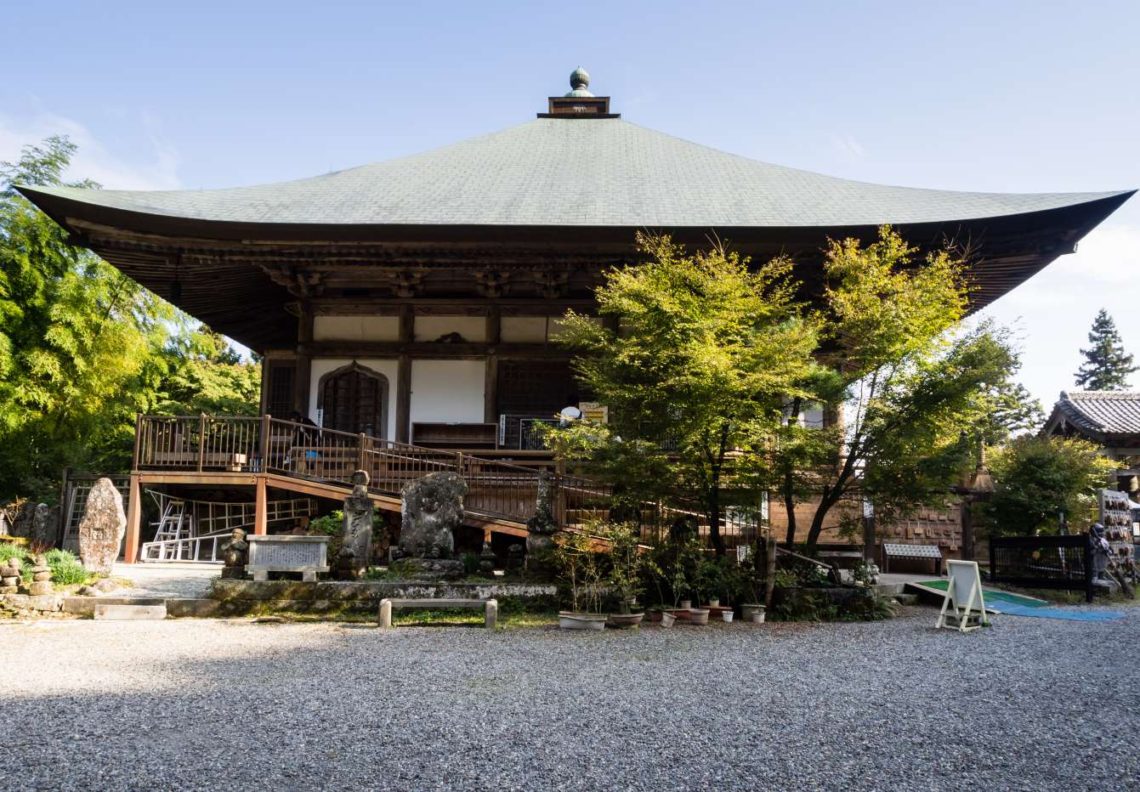
Futagoji Temple – A Complete Guide to Kunisaki Peninsula’s Poster Boy
The name Futagoji (両子寺) is no stranger for anyone who has visited or lived nearby the Kunisaki peninsula. And yet, this temple remains relatively unknown among the travel circle given its secluded location. Futagoji is a small mountain temple located deep within the forests in the center of the peninsula. Because of this and also its iconic twin Nio guardians (仁王) statues, Futagoji is widely considered as the poster-boy temple of the region.
In fact during my exchange to Oita, Japan, this was one of the first temples that I visited on a field trip. Despite having to travel in a large group while being accompanied by the enthusiastic chatters from other students, I was amazed with the temple’s surroundings. Being surrounded by towering trees, it was definitely a spot to look out for especially if you enjoy the peacefulness of nature. With that being said, lets dwell deeper into the background of this little temple.
Table of Contents
History of Futagoji Temple
The history of Futagoji started way back 1,300 years in AD 718 during the Nara period (奈良時代/AD 710–784). During that time, a monk named Ninmon (仁聞) came from Usa Jingu (宇佐神宮) and revolutionised a new culture called Rokugo Manzan (六郷満山). This new culture features a unique combination between Buddhism (仏教), Shintoism (神道) and also a little touch of mountain worship. To learn more about this mystical and unique culture, check out my separate article on its history.
The monk later constructed various temples throughout the peninsula, one of them being Futagoji. He ordered its construction on the slopes of the 721 meters-high Mt Futago (両子山) as a central hub. Futagoji itself belongs to the Tendai sect (Tendai-shu/天台宗), the largest of all Buddhist groups in Japan and one that sparks its origin from China. This event itself symbolises the transformation that occurred throughout the Nara period, where Japan began embracing cultural practices and religions imported from China into their lifestyle and politics.
Futagoji originally started as a training ground for monks practising Mineiri (峰入り). It is also the main prayer spot for the Matsudaira clan (松平氏), who ruled the nearby castle town Kitsuki (杵築). Over centuries, the temple survived multiple disasters including the impactful Shinbutsu Bunri (神仏分離) policy, countless World War 2 bombings as well as recurring natural disasters. Nevertheless, the temple survives until today and serves as a spiritual site for travelers wishing to connect with mother nature.
Exploring Futagoji
Futagoji (両子寺) itself lies on the foot of Mt Futago (両子山), with its complex located inside the lush forest of the peninsula. The complex mainly comprised of temple prayer halls being surrounded by towering trees that have been here for centuries. Essentially, exploring the temple complex is like a family-friendly version of jungle trekking. Nevertheless, exploring the grounds allows one to discover plenty of photo opportunities with mother nature. Check out the below links to explore the temple’s complex.
- Firstly, check out the temple’s iconic entrance that garnered its status as Kunisaki peninsula’s poster boy.
- Afterwards, check out the surroundings as we head towards the main hall.
- Also, venture further into the woods and look out for these Shinto elements.
- And then, visit the inner main hall featuring a variety of deities.
- If you love autumn, check this section out.
- Words alone can’t convince you enough? Check out this captivating video of the temple.
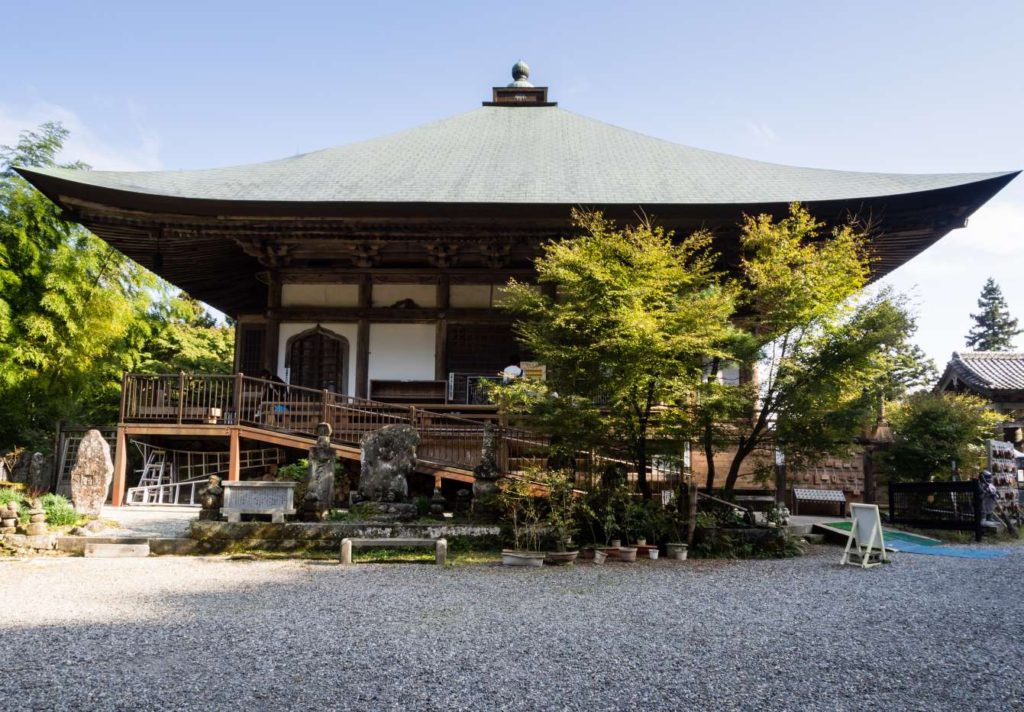
Save In Pinterest
No time to read this Futagoji travel guide now? Click on the save button and pin it for later!
From The Entrance
Upon arriving at Futagoji, we will be greeted by a pair of muscular gentlemen guarding a long path of stairs. These are called the Nio guardians (Niou/Niō/仁王), known as Agyo (Agyō/あぎょう/阿形) and Ungyo (Ungyō/うんぎょう/吽形) respectively. One of them has its mouth opened saying ‘Ah’ while the other one has its mouth closed, expressing ‘Uhm’. The reasoning behind this naming is because in Buddhist, they believe ‘Ah’ is the first sound that comes from a baby giving birth. On the other hand, when a person passes away, he/she will close the mouth and say ‘Uhm’
These statues however were built later than the temple in AD 1814 during the Edo period (Edo Jidai/江戸時代), and are officially the largest in the region, towering to about 245 cm. One could marvel at the refined details of not just the sculpting, but also how the statues are shrouded in mosses after years of being in the forest. It’s as if the statues have already assimilated with the surrounding nature, which is undeniably a soothing and beautiful sight all together.
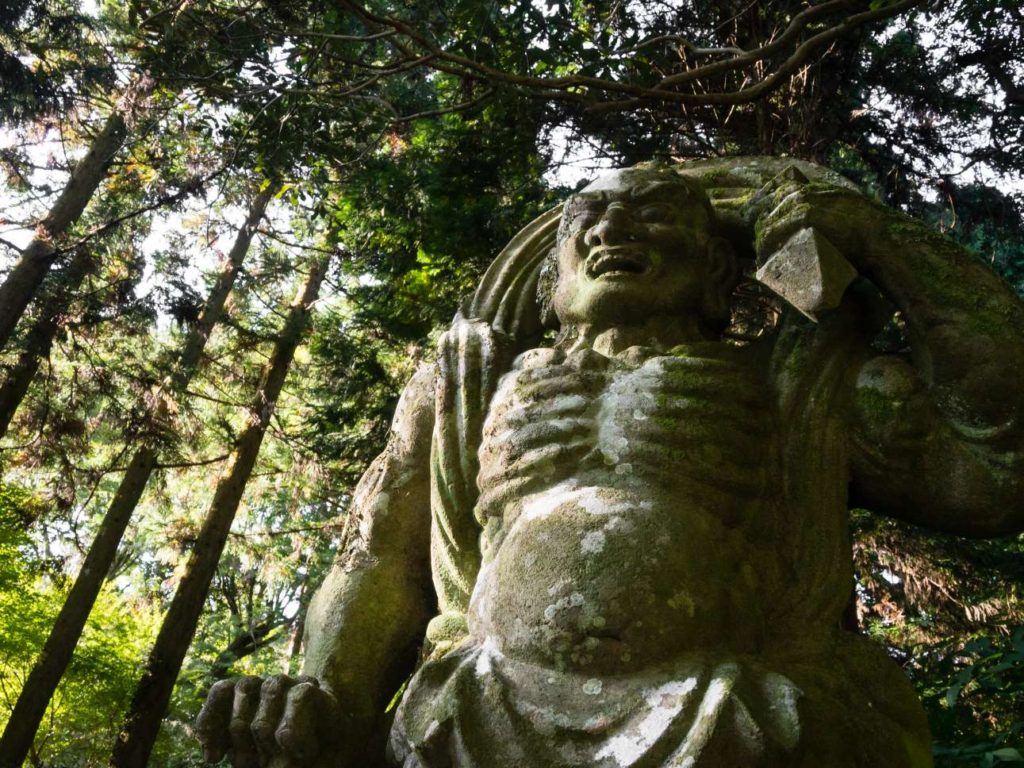
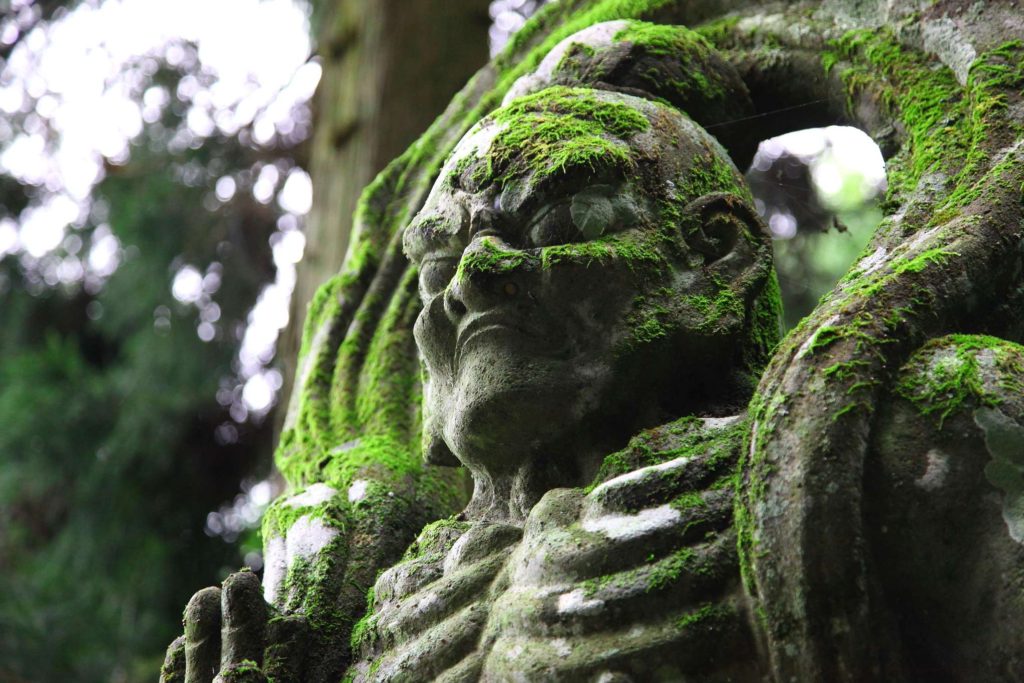
From The Nio Guardians to the Main Complex
After passing the mini temple gate, continue walking along the little stone path towards the complex. The surrounding trees and mosses that grew along the pathway do add a whole new dimension of beauty to it. One can see the contrast between the bright green plants and the rustic grey stones especially on a cloudy day. Additionally, one can hear the calm flowing streams of water next to the path as you are walking towards the temple. Take your time to stroll along the path, as it is a great way to soothe the mind from stress.
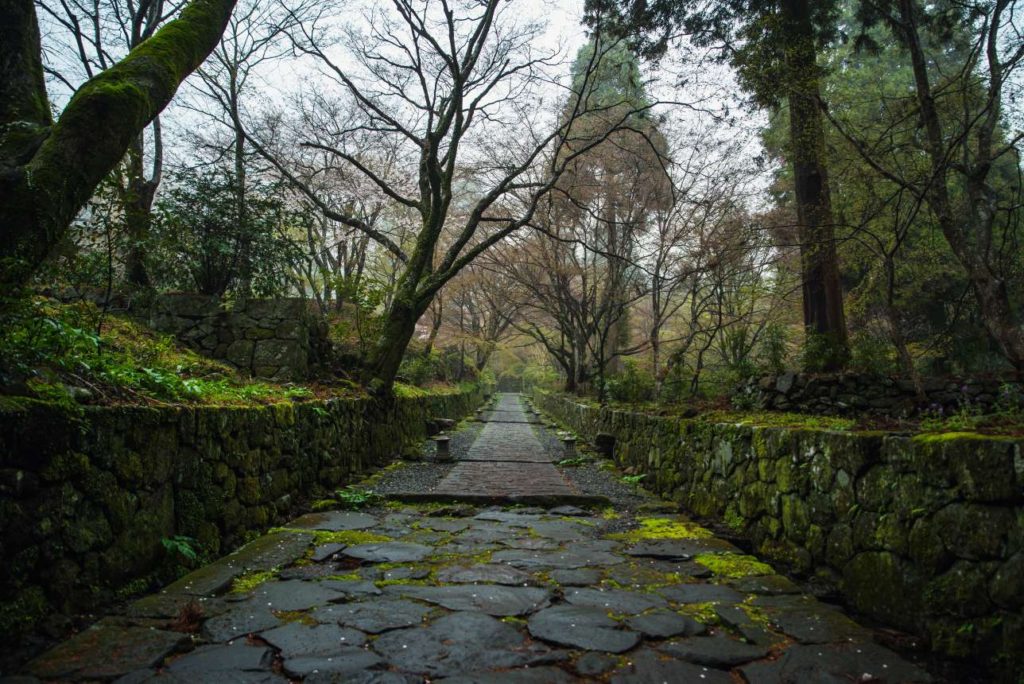
After reaching the end of the path, we finally arrived at the main hall area. But before we check out the hall, let’s look around the surroundings. Firstly, there is the reception office that serves as a pitstop and also a souvenir shop. You can’t miss it with its curvy roofs and rustic traditional design.
There are also these little pagodas that are located around the temple grounds. I like how they are placed right next to the lush trees, while being accompanied by little statues of monks and deities. The whole complex truly resembles a mini village, except that the villagers are statues in this case.
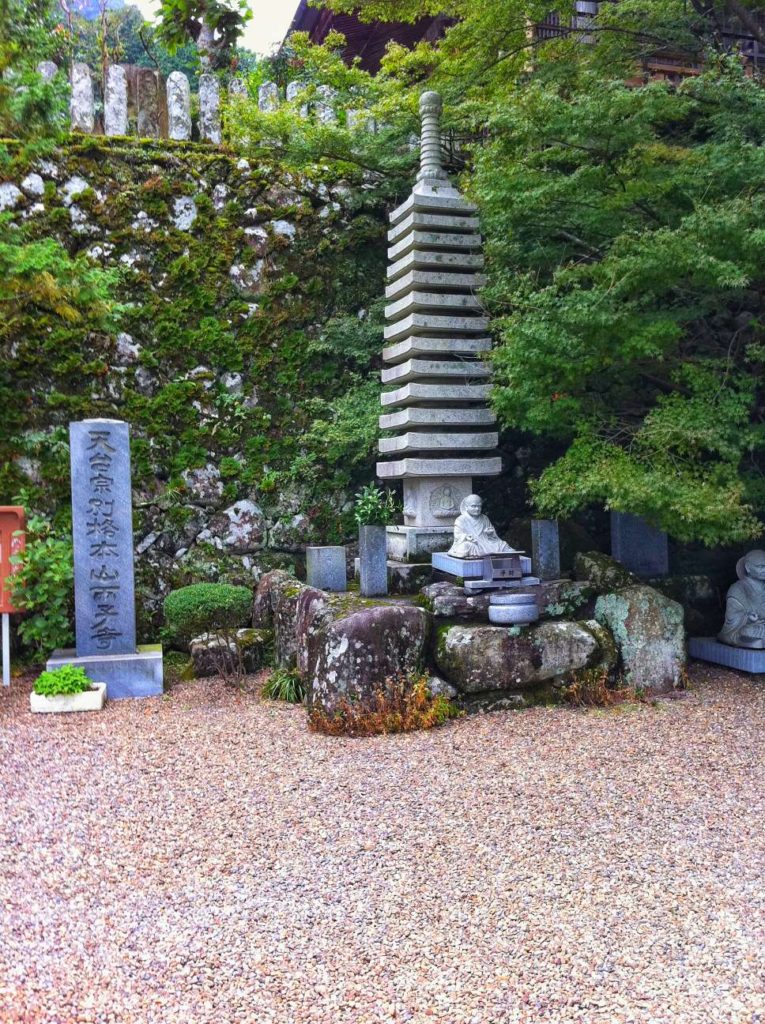
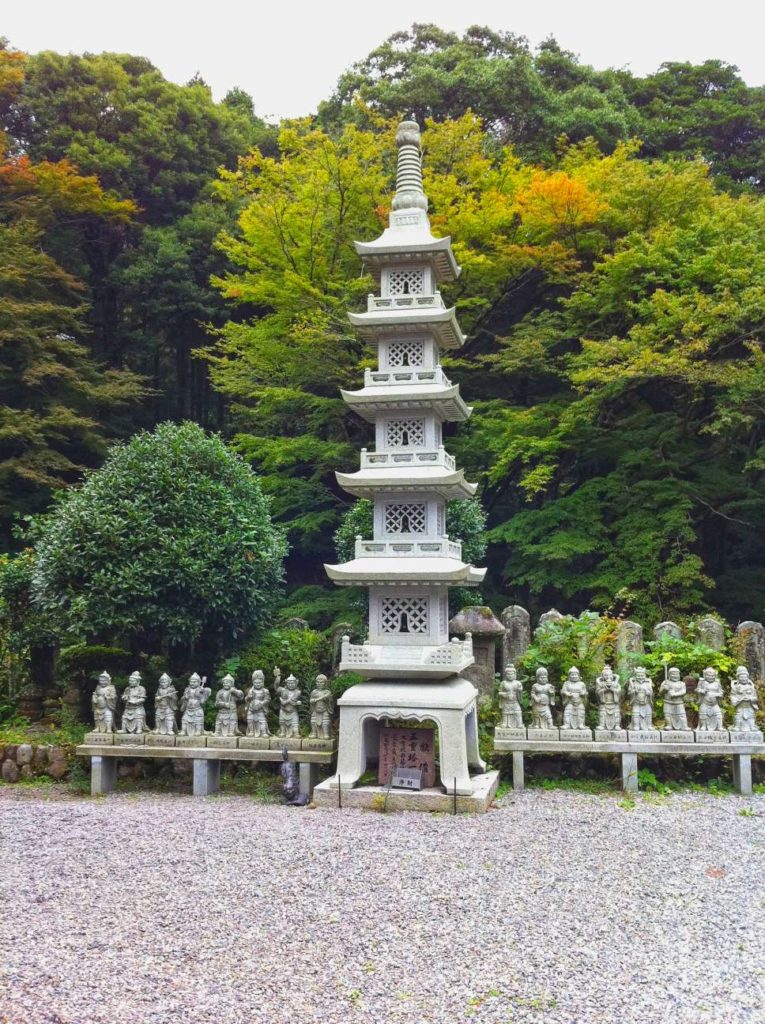
The Main Hall of Futagoji
The main hall itself is called Gomado (Gomadō/Gomadou/護摩堂), which serves as a training hall for Rokugo Manzan practitioners and is the largest of its kind in the region. The hall was built during the Kamakura period (鎌倉時代/AD 1192-1333) and later rebuilt during the Meiji period (明治時代/AD 1868-1912) after being destroyed in a fire. It features a small white Fudo-myoo statue (pronounced Fudou-myouou/Fudō-myōō/不動明王), aka the vanquisher of evil in Buddhism right at the entrance.
While we were only allowed to view the hall from the outside, one can sense the solemnity of its surrounding. Not to mention, right next to the hall is a large bell known as the Peace Bell. Local monks often ring the bell, as they believe hearing its solemn chime will eliminate one’s sorrowfulness and uneasiness. Clearly the founders prioritised a lot on solitude and also spirituality when constructing this temple. It was also later we were told that locals often come to this temple to pray for safe childbirth too.
You are just in time to visit the monthly Goma-taki (護摩焚き) ceremony. The ceremony involves the burning of wooden sticks known as Goma-gi (護摩木), while being accompanied by the solemn chanting of prayers by the monks. It is believed that the purpose is to ward off evil as well as to clear the mind to achieve one’s goals. Take note that this ceremony starts from 9.30 am on the 28th of every month.
Trekking Through The Lush Forest
In order to visit the inner main hall, we need to pay a visit to mother nature along the way. The beauty of this temple however lies in its inner sanctuary area which is covered by the lush forest. The towering trees shade the surrounding paths to create an overall mystical and serene environment. So much so that even locals ranked this spot as one of the top 100 best spots for forest bathing in Japan (森林浴の森日本100選). This place is without a doubt a haven for the nature lovers who wish to immerse themselves into the wilderness.
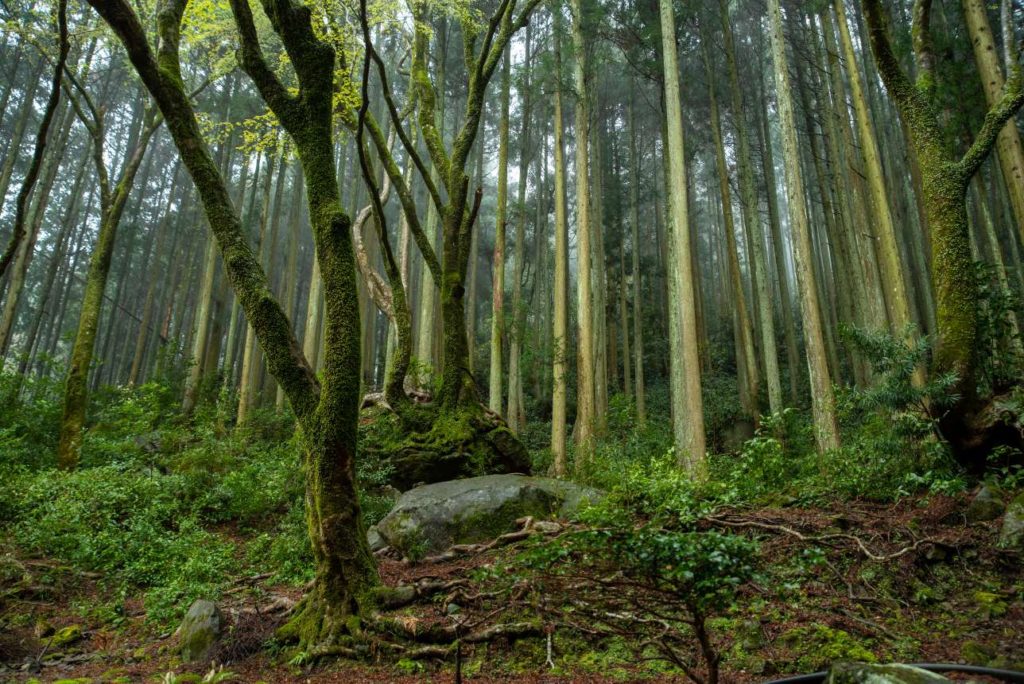
The forest also features a unique cultural asset known as the stone-made Kunisaki Pagoda. I like how the pagodas blend wonderfully with the serene forest backdrop, given that these pagodas are made out of stones.
The Kunisaki Pagoda (国東塔) is a stone-made pagoda that is found abundant throughout the peninsula. Their height spans around 2 – 3 meters high and also their name stems from their prevalence in the peninsula. It is said there is around 500 of them, often placed within temple grounds or next to cliffs.
What separates the pagoda’s design from others is the elegant lotus pedestal (Rengeza/蓮華座) located in between the base foundation and the pagoda body. Lotuses in Buddhism represents spiritual awakening, given how they stem from muddy water and yet still remain clean and fragrant.
Many of these were created throughout the Kamakura period (鎌倉時代/AD 1192 – 1333) to the Muromachi period (室町時代/AD 1336 – 1573), the periods of the samurai who often lead rustic and crude lifestyles. Common use for them include encasing sutras, prayers for peace and also serve as grave markers.
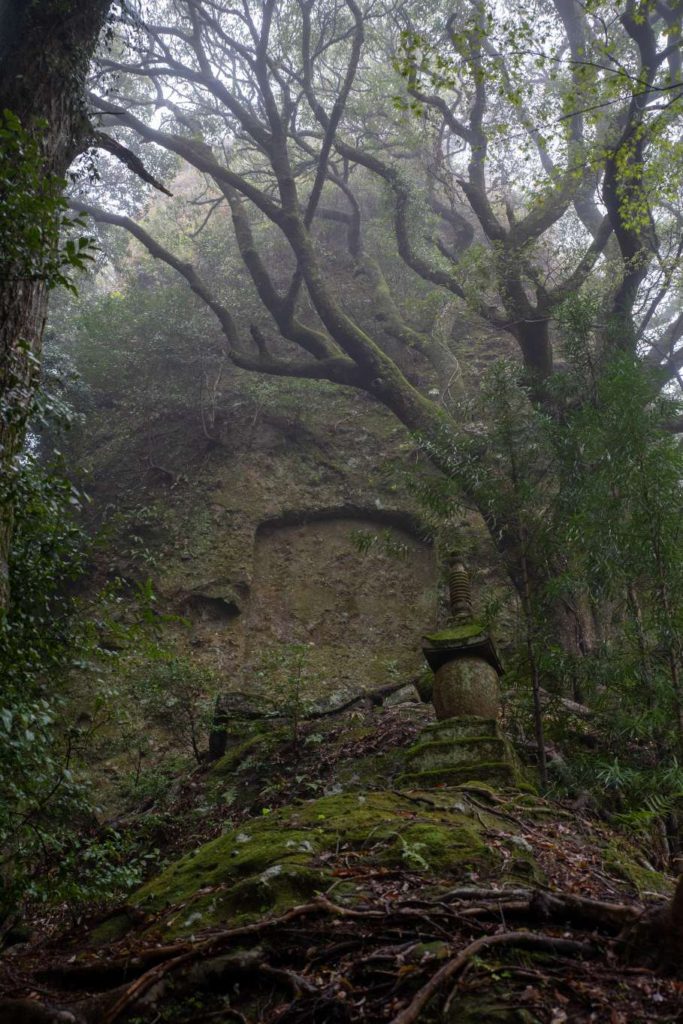
Check Out Some of These Shinto Elements That Are Incorporated with the Temple
Dosojin (pronounced Dōsojin/Dousojin/道祖神), a pair of Shinto deities (aka Kami/神) that often appears on village boundaries, forks in roads and mountain passes. There are often designed in a form of a married couple or a stone slab. In the case of a married couple, the man is called Jō (尉) while the lady is called Uba (媼). They serve to protect travelers and pilgrims along the road, and also to ward off evil spirits. In particular for Futagoji’s case, the Dosojin also serves to offer blessings for those who wish to hike the nearby Futago mountain (両子山).
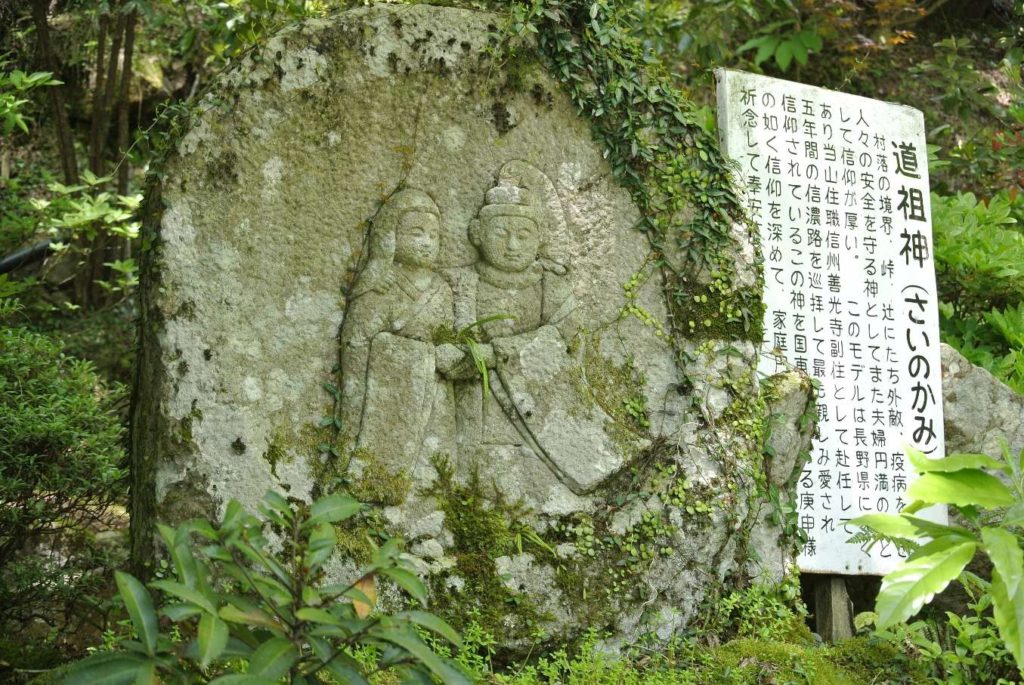
And then on the way up, we will encounter the stone gate known as Torii (鳥居). Toriis often exists in Shinto shrines and served to distinguish the sacred grounds from the human world in Shintoism. And to think that one exists here truly shows how the founders incorporated the Shinto beliefs into a Buddhist site. This particular torii is carved using stone, to symbolise the nature of the temple as a mountain temple as well as the practice of mountain worship known as Rokugo Manzan.
Also, here we can see another element of Shintoism. The string on the torii is called Shimenawa (しめ縄), a rope made out of rice straw and hemp. They are often seen in shrines to mark the boundaries between the world and the realm of deities.
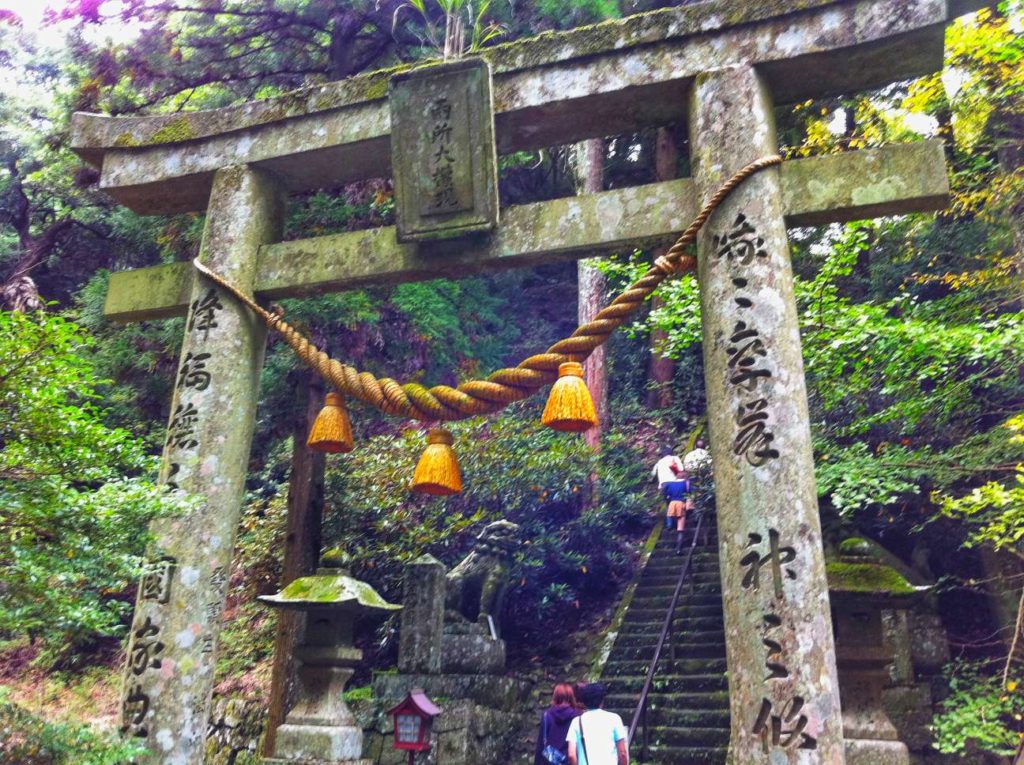
The Inner Main Hall of Futagoji
After trekking through the dense forest, we finally arrive at the inner main hall or Oku-no-in (奥の院). The hall itself clings to a cliff and is mostly made out of wood. The main characteristics of the hall to look out for in its architecture is the Kake-zukuri (懸造り). This style features a frame of wooden slats and pillars that supports the building itself. As a result, this creates an illusion which the hall look like its floating on the mountain.
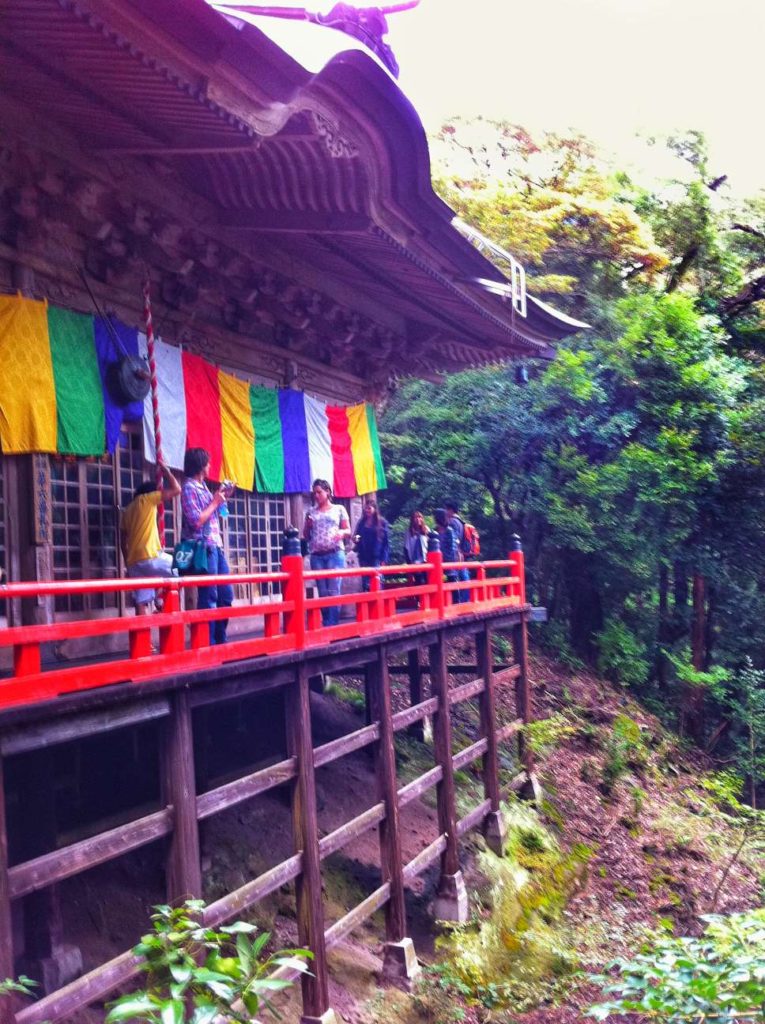
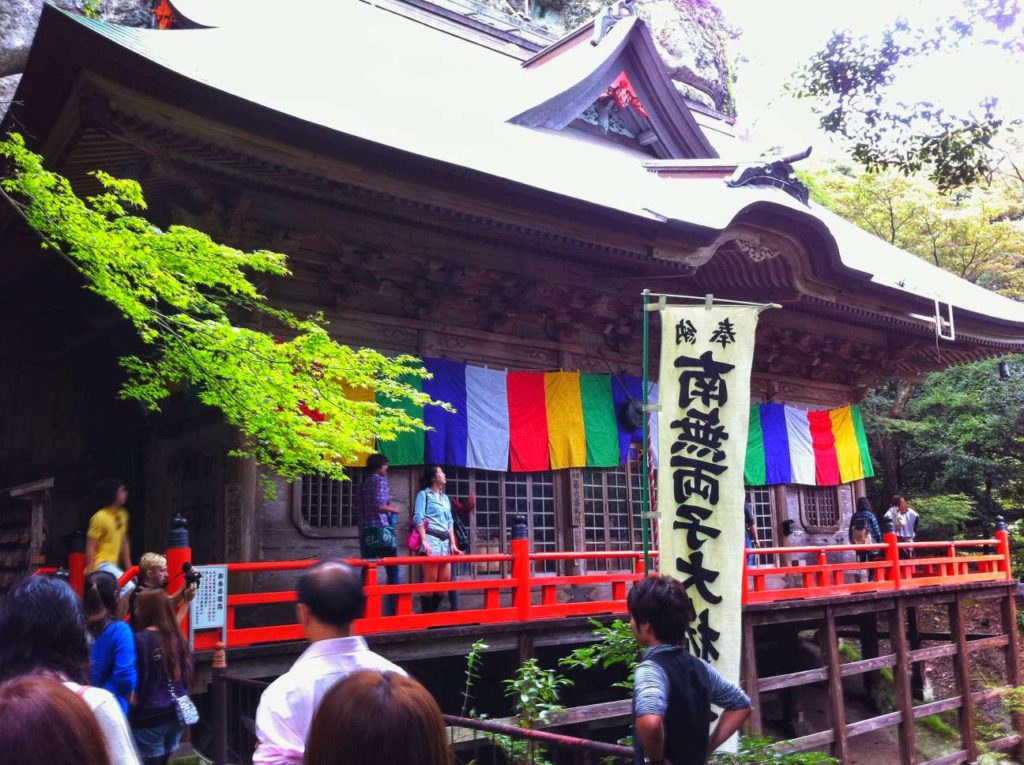
While the forest view from the platform is certainly lackluster in comparison to our previous jungle trekking adventure, the hall is a treasure itself, housing several deities from both Buddhism and Shintoism. The main attraction is a wooden statue of an eleven-headed thousand-armed Kannon (aka Goddess of Mercy in Buddhism/十一面千手観世音菩薩). With her 11 heads calmly overseeing the hall together with her hands spreading out like a flower, she certainly graces the hall with her presence.
Accompanying her are other deities including a statue of Ninmon (仁聞) as well as Hachiman (八幡), the Shinto God of War who also became a Buddhist deity. Too bad we were not allowed to take photos inside the hall itself. Despite this, this spot is known as a spiritual spot especially for those wishing to meditate and enjoy the wilderness.
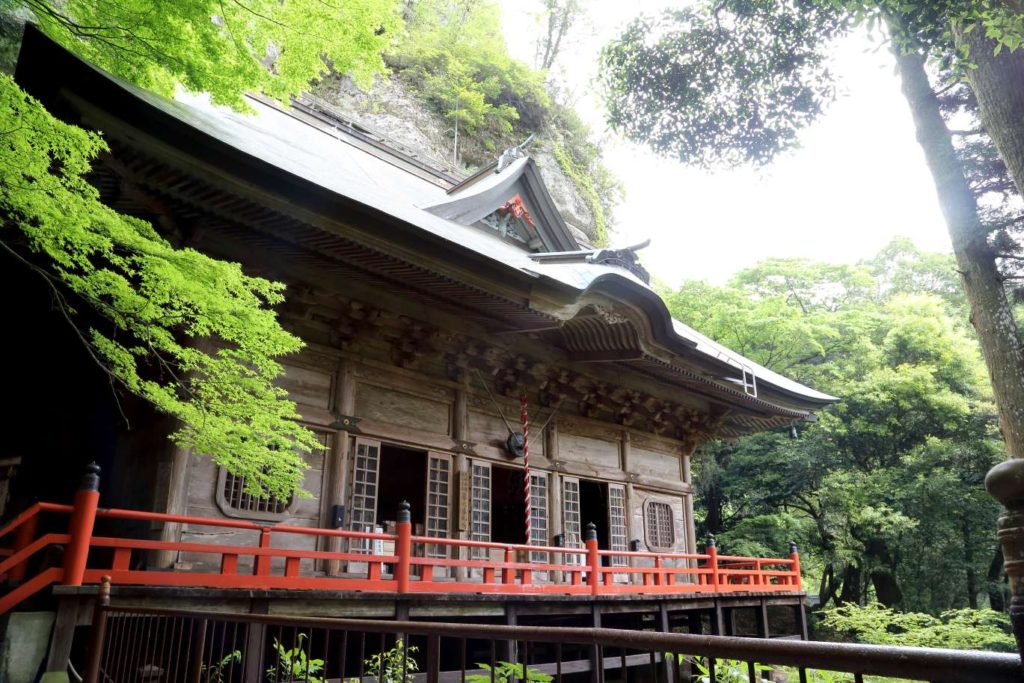
Futagoji During Autumn
Another great time to consider visiting the temple is during autumn (mid-Nov to mid-Dec). The trees during this time will turn into orange and gold, providing an overall warm scenery to the surroundings. The autumn leaves perfectly synergise with the rustic wooden buildings, giving an overall impression that beautiful things are transient and will fade eventually. Special credits to Tourism Oita for these wonderful autumn shots.
Exploring Futagoji Through Video
Words alone are simply not enough to describe the serenity and beauty of this place. TokyoStreetView in Youtube features a high-quality video of the temple’s complex, capturing the captivating sceneries of the temple’s complex. Be sure to check out TokyoStreetView’s channel as well for more amazing videos of hidden gems across Japan.
Getting To and Around Futagoji
Rent A Car
Similarly to other temples throughout the Kunisaki Peninsula, the recommended way to visit Futagoji is to rent a car. Despite the sheer number of attractions, public transportation is extremely scarce in the region. All the more reason to consider renting a car from Tocoo to travel and explore the other attractions around the Kunisaki peninsula. In fact, a friend of mine used Tocoo; Japan’s leading rental car website which is reliable and provides a wide selection of cars, ranging from small economical cars to the big family ones with affordable rates.
Are you unsure of getting the necessary license and familiarising with the rules of driving in Japan? Fret not as they provide comprehensive and elaborate guides in their site on what you need to start your driving journey in Japan. Click here to embark on a wonderful journey of driving through the countryside of Japan.
Hire A Taxi
Oita Prefecture Taxi Association does provide taxi services across the prefecture, which you can inquire from their website. Alternatively, if you are proficient in Japanese, consider contacting local taxi companies such as Futaba Taxi directly to make a reservation. Despite this though, do note that taxi fares in Japan can be pricey (Yen 500 – 730 for first 2 kms and subsequently, Yen 80 – 90 yen increase for every additional 300 – 400 meters travelled). Ultimately, if you are planning to visit the region, renting a car is undeniably the more economical option.
Getting A Wifi
Given the remoteness of the temple as well as the surroundings, public Wi-Fi is undeniably extremely scarce. I would recommend renting a Wi-Fi upon arrival to Japan. Renting a portable Wi-Fi helps you to stay connected, together with other activities such as using Google Maps, researching other hotspots and even Instagramming. All the more convenient while exploring the rural parts of Japan.
Overall Thoughts
Futagoji is definitely a temple worth considering its reputation not just as a symbolic historical site, but also an enchanting spiritual spot. It integrates simple and rustic structures together with the serene forest to form an entirely mystical scenery. As mentioned above, it truly defines the word of reclusiveness and it is advisable to take this in consideration when planning a trip to the temple.
It is important however, to keep in mind that the region itself comprise mainly of villages and mountains. As such, convenient stores and supermarkets are minimal; so its best to stock up on some snacks and drinks (and more importantly, getting a Wi-fi) before heading out.
As such, I would recommend visiting Futagoji if you:
- Appreciate the peacefulness of the woods and enjoy exploring them.
- Seek to go on a road trip and explore quieter options.
- Are a history buff and enjoy visiting temples.
- Love snapping photography of sceneries (seriously, the forest here is truly enchanting and there is plenty of opportunities to snap Instagram photos and reels)
Loving the content here?
Subscribe and get your free hidden gems in Japan bucket list here.


You May Also Like
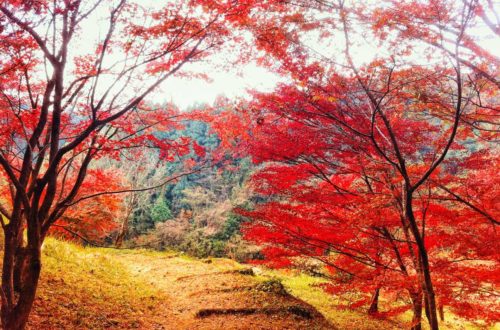
Bungoono – Admiring the Beautiful Autumn in Japan’s Enchanting Countryside
September 20, 2021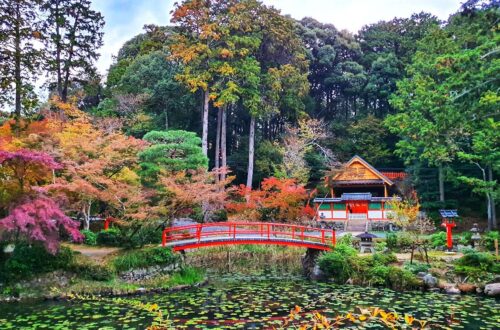
Oharano Shrine – The Ultimate Guide to Kyoto’s Hidden Gem
February 12, 2024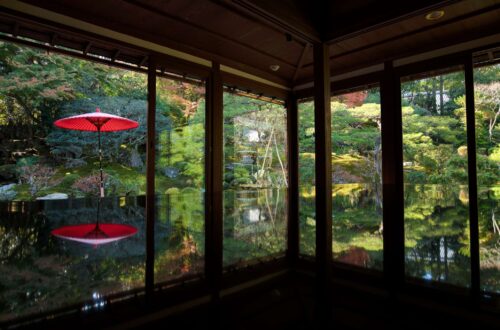
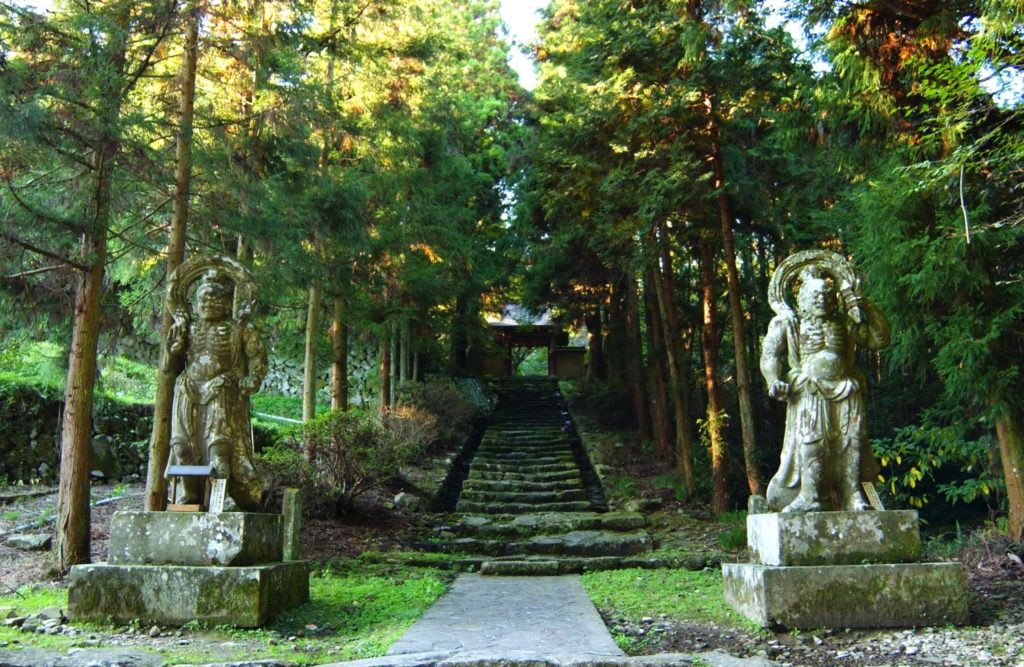
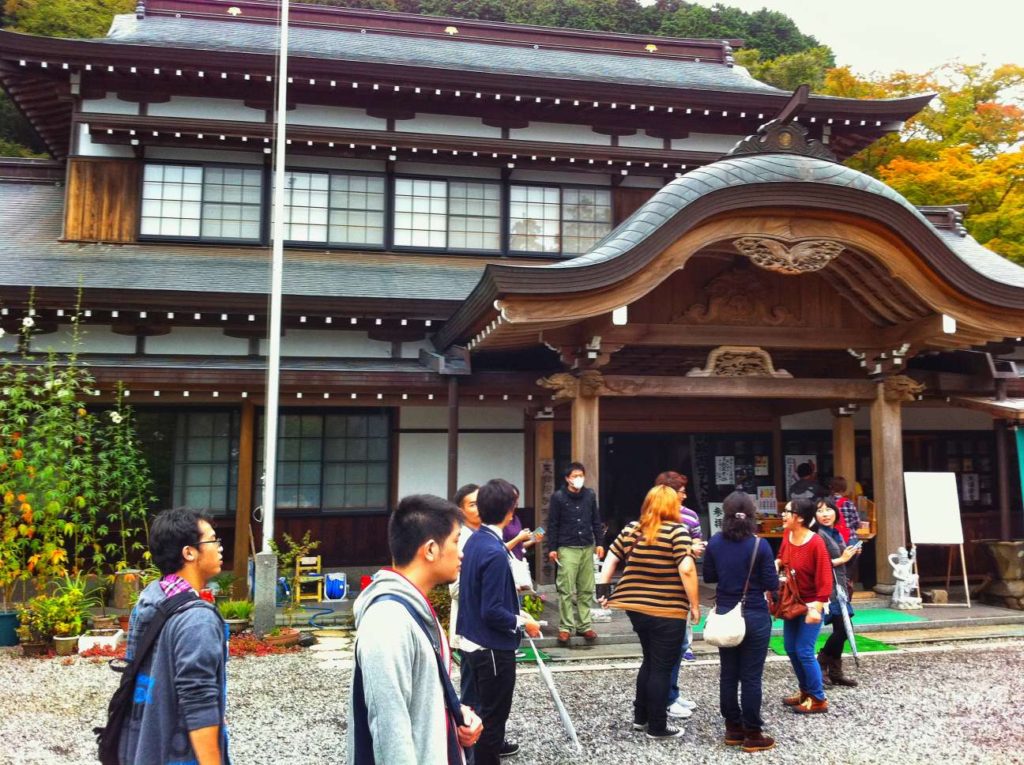
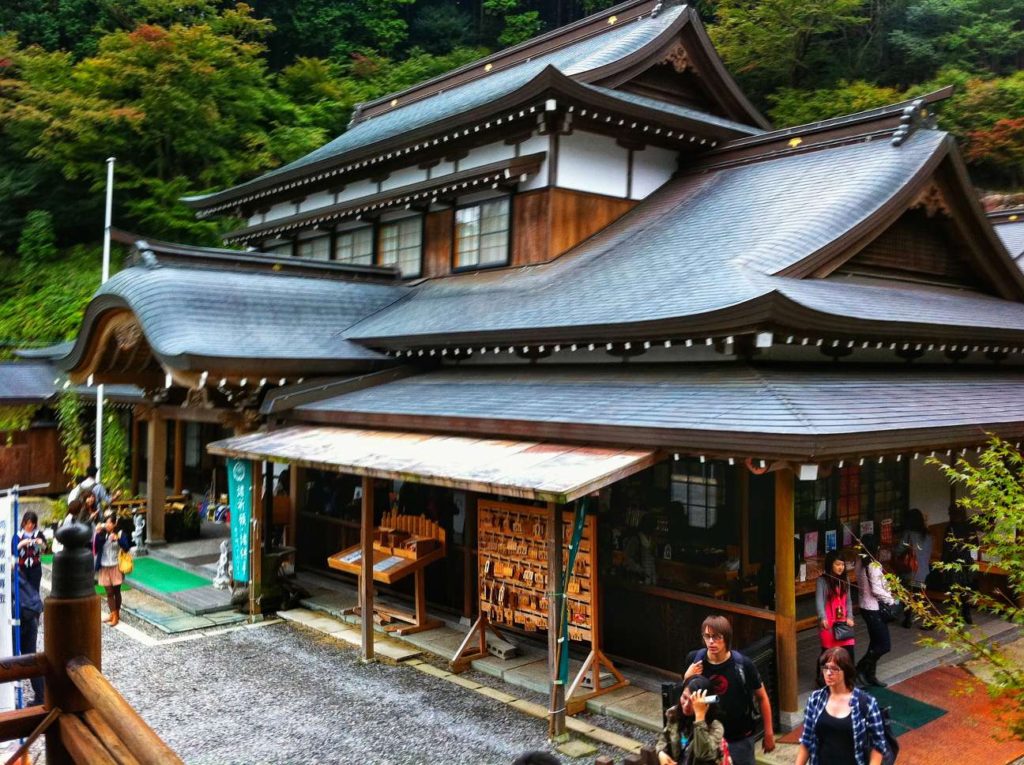
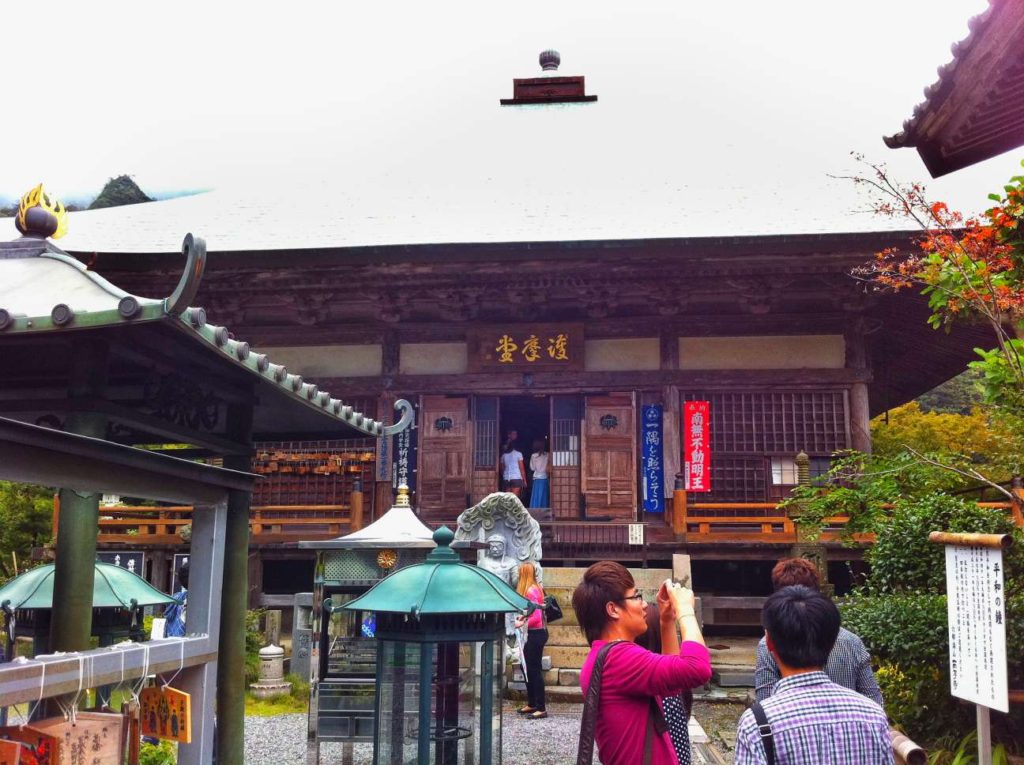
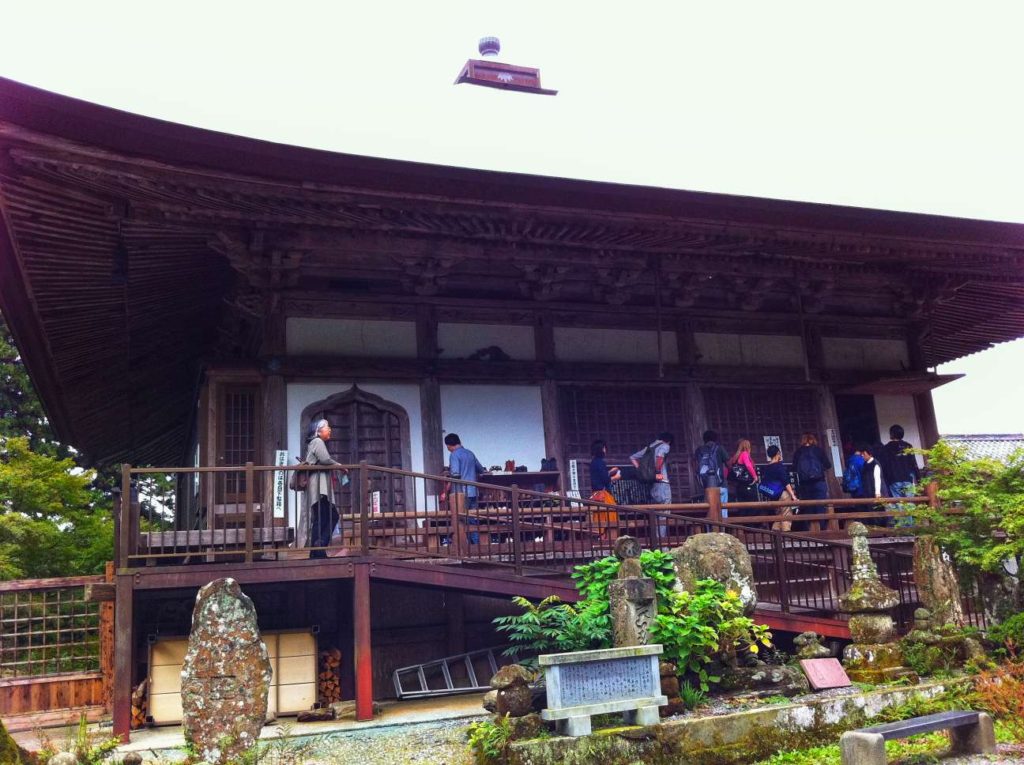
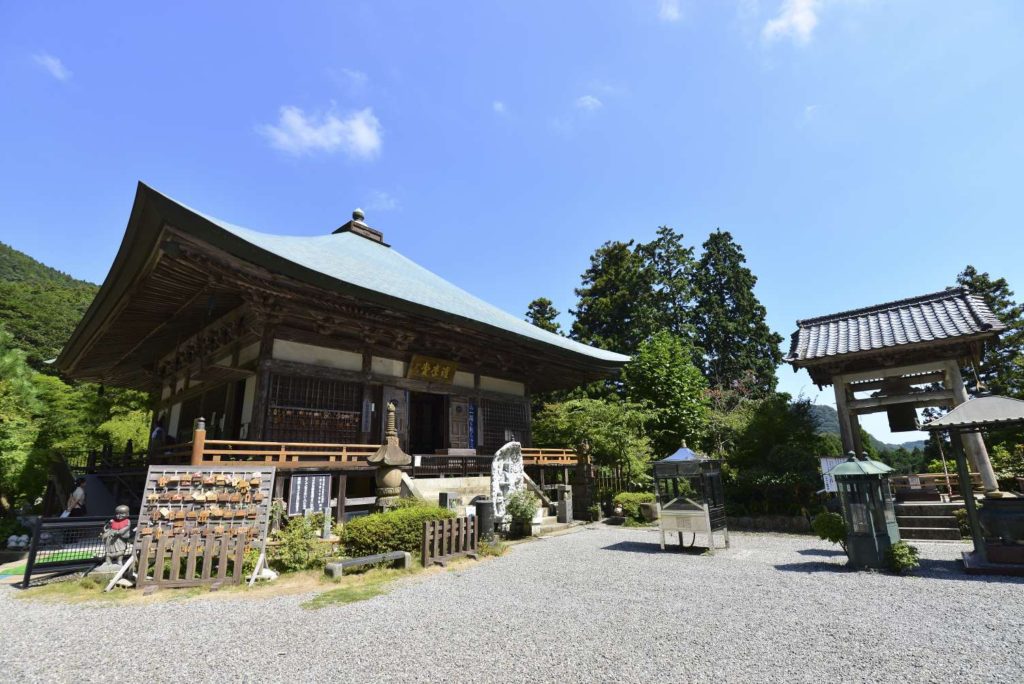
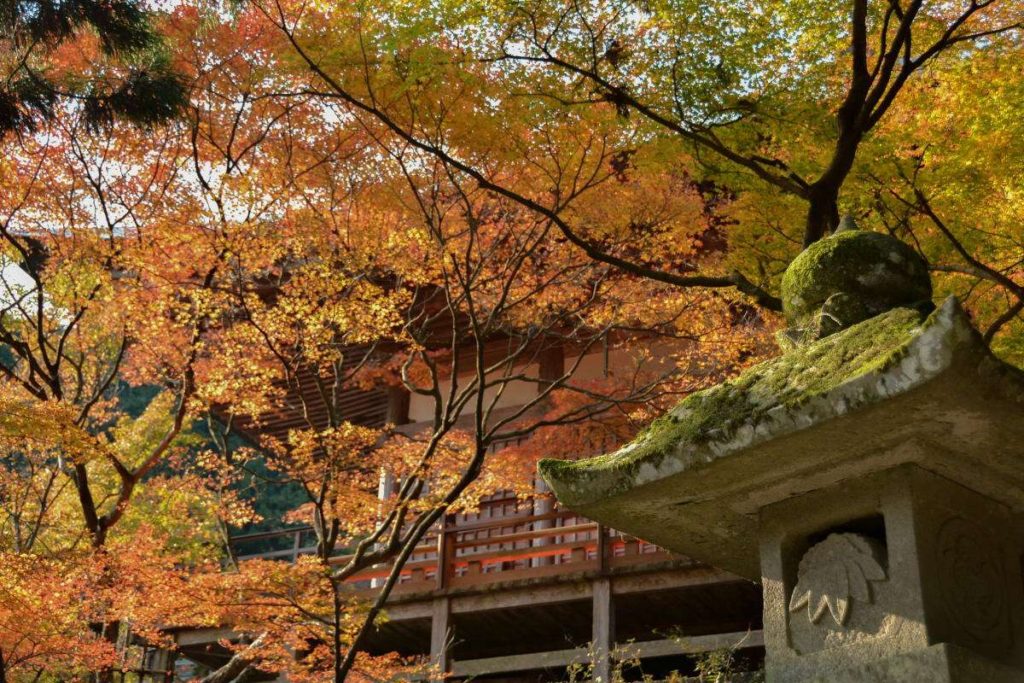
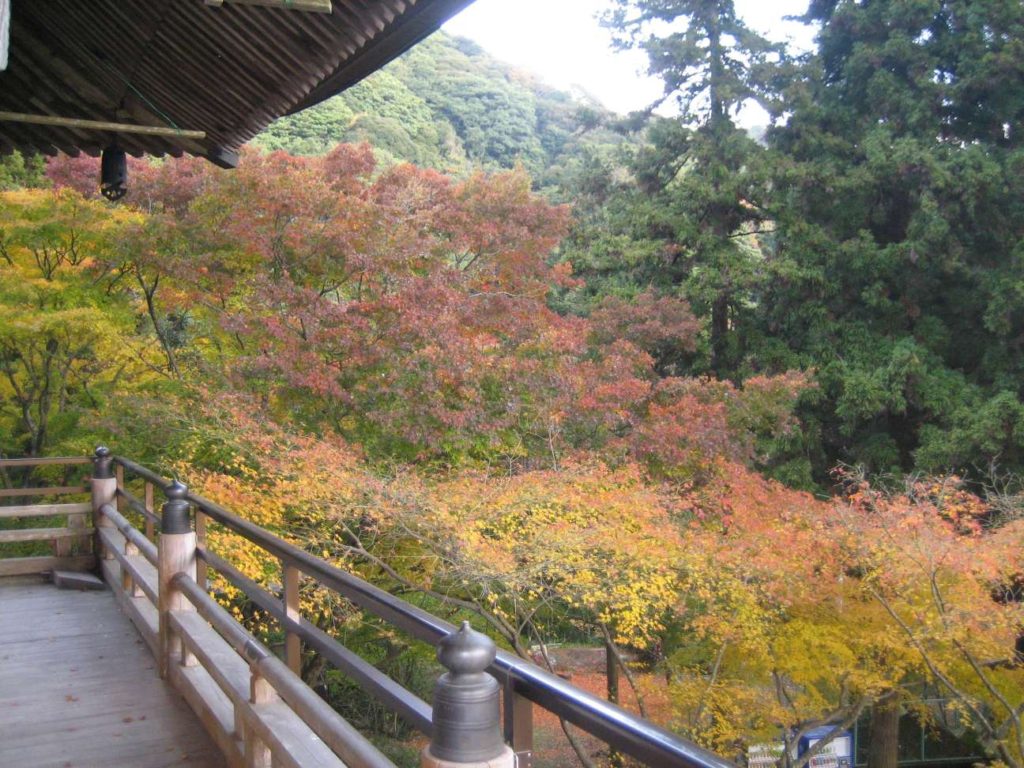
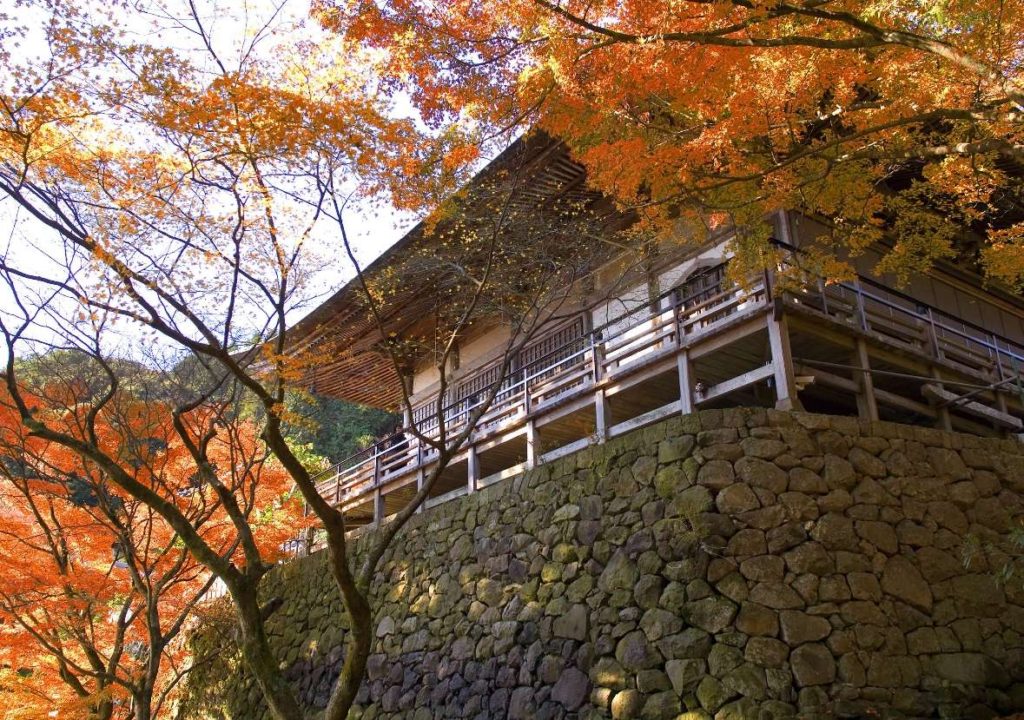
4 Comments
Tony Stewart
Hi there! The guide is super helpful and I really want to check out Futagoji myself. However, I don’t drive, and was thinking to charter a driver for the day… how long did it take you to take your own tour? I’d love to estimate how long I might need to take it all in (and take some photos along the way)
Thank you!
Yentravelsjapan
Hi Tony, thanks for your question! For my case, getting from Oita to Futagoji takes around an hour plus one-way via car; and there is also the fact that we spend extra time to explore other temples like Monjusenji around the Kunisaki Peninsula.
In your case, you can opt for several options:
1. Opt for a bus tour from Oita/Beppu which covers Futagoji and also other attractions like the famed Usa Jingu shrine. More info can be found on their website (https://www.oitakotsu.co.jp/1day/) and this requires prior reservation.
2. If you prefer private tours, there are several options to consider such as Michi Travels (https://www.michitravel.com/travelinformation/kyushu/oita.html), Japan Kyushu Tourist (https://www.japan-kyushu-tourist.com/services-en/) and Japan City Tour (https://japancitytour.com/contact/). Additionally, I have heard from others that the Kunisaki Information Center also organises trip to Futagoji (https://visit-kunisaki.com/en/plan-your-visit/); which I could suggest to contact them ahead first to confirm before planning your visit.
Hope that helps with your question =)
Tony Stewart
Ah thank you, I appreciate the reply!
I think I should have been more clear with my question though… 😅 I meant, how long were you on the grounds of Futagoji – that is, walking around the trees, temples, taking photos and such?
I will charter someone to drive me there from Yufuin and would like to know how long I should tell them I will be at the temple, spending my time soaking it all up! I think maybe, 2 or 3 hours would be enough? You listed so many cool things to explore, I want to make sure I have enough time for them!
Thanks again, I really appreciate it!
Yentravelsjapan
Hi Tony, I spent around an hour like that at most to explore the area, but you can allocate another hour or two if you enjoy nature. As for my case, I needed the extra time to explore the other temples as well!